Temple of Zeus Metopes
1/35
Earn XP
Description and Tags
Name | Mastery | Learn | Test | Matching | Spaced |
|---|
No study sessions yet.
36 Terms
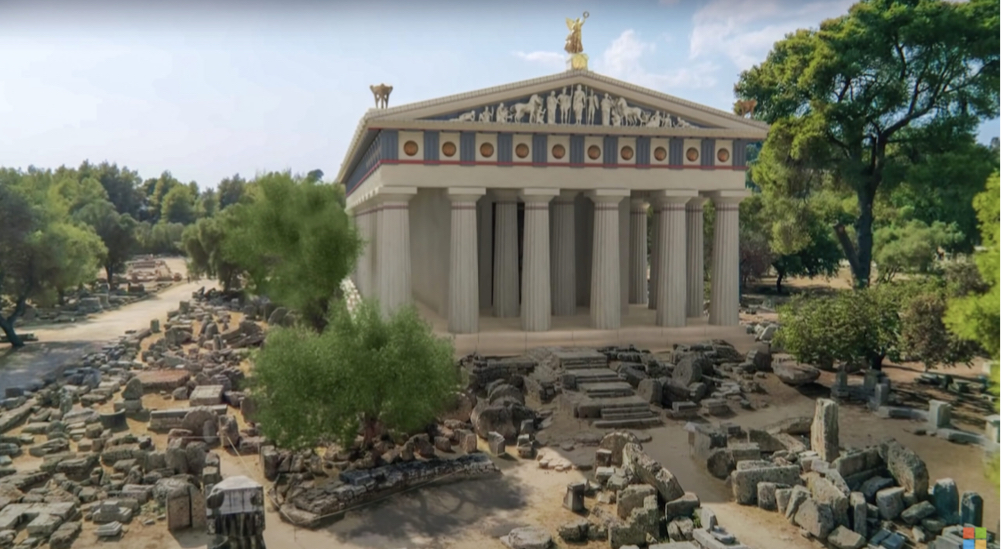
Where is the Temple of Zeus located?
Olympia

What type of columns are used in this temple?
Doric order structure

What was the theme of the metopes on the temple? How was this appropriate to the location?
They were devoted to the 12 labours of Herakles.
Good unity of theme→ Olympia was the birth place of the Olympics which began in 776 BC and Herakles is credited with founding the event. ALSO Herakles is a well known son of Zeus.

What labour of Herakles does this metope depict?
Herakles’ first labour where he was instructed to defeat the Nemean lion, whose skin he thereafter wore.
The metope depicts Herakles triumphantly standing with one foot on the dead lion after his victory.
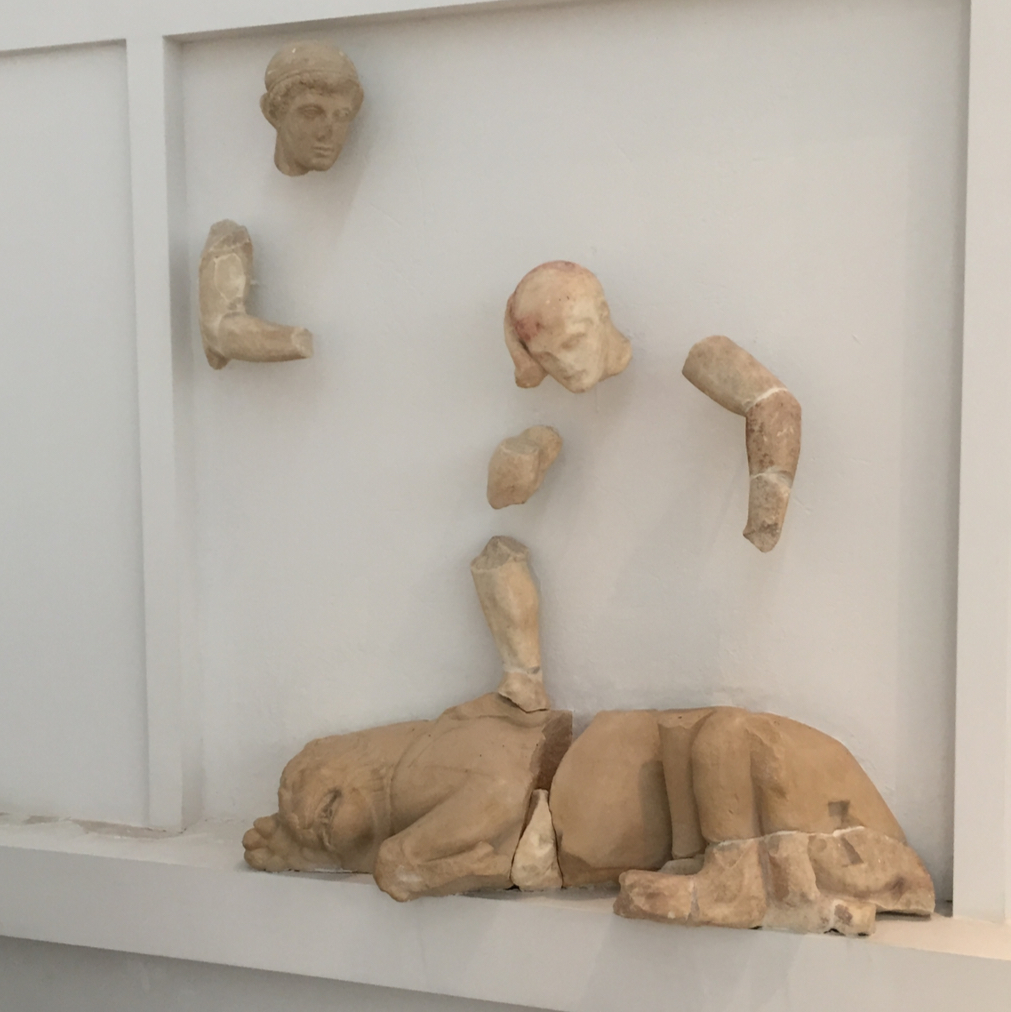
What is this metope made from?
Parian marble

When is this metope dated to?
460 BC
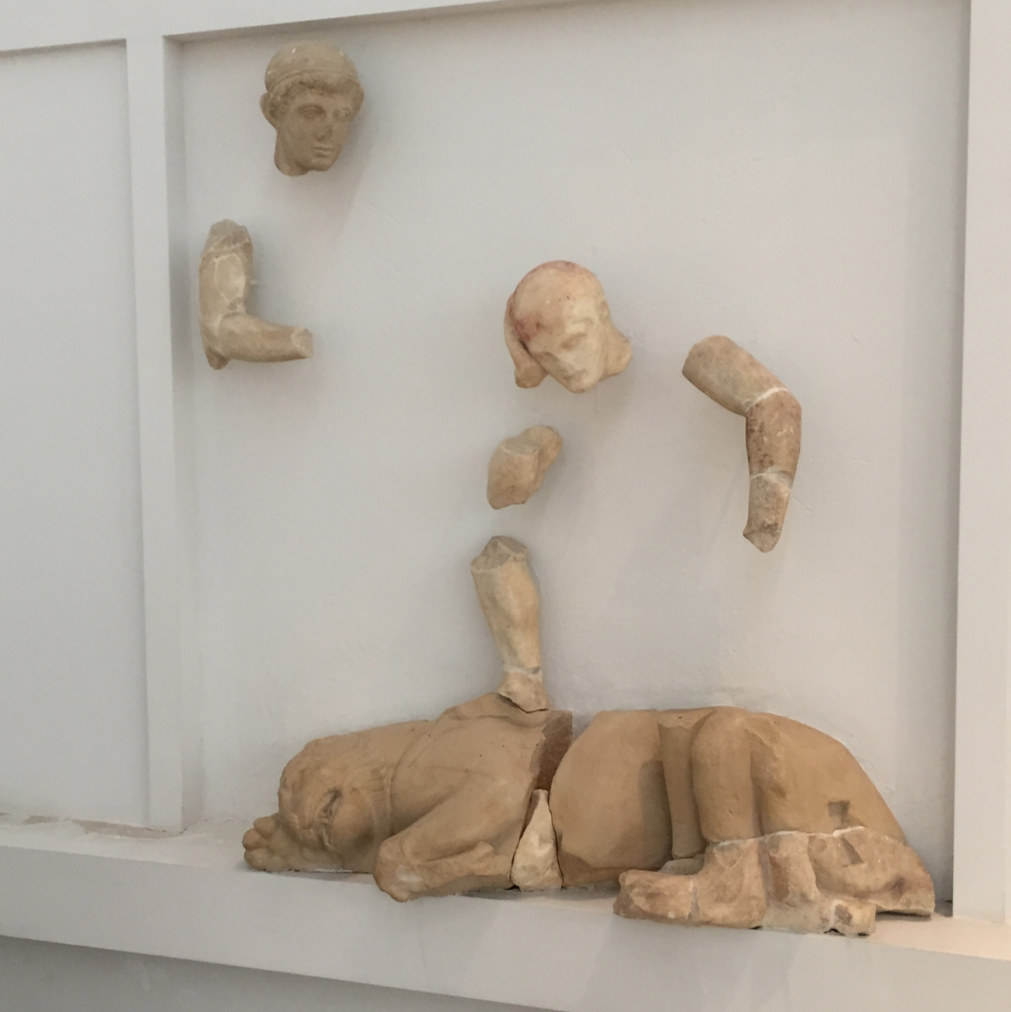
How tall is the metope? And how wide? Give in metres
1.6m high
1.5m wide
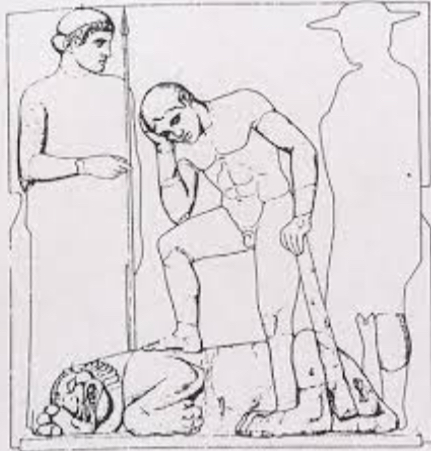
How is the composition of this metope successful?
Vertical composition contrasted by the horizontal figure of the lion.
Central focus is on Herakles, the main figure within the narrative
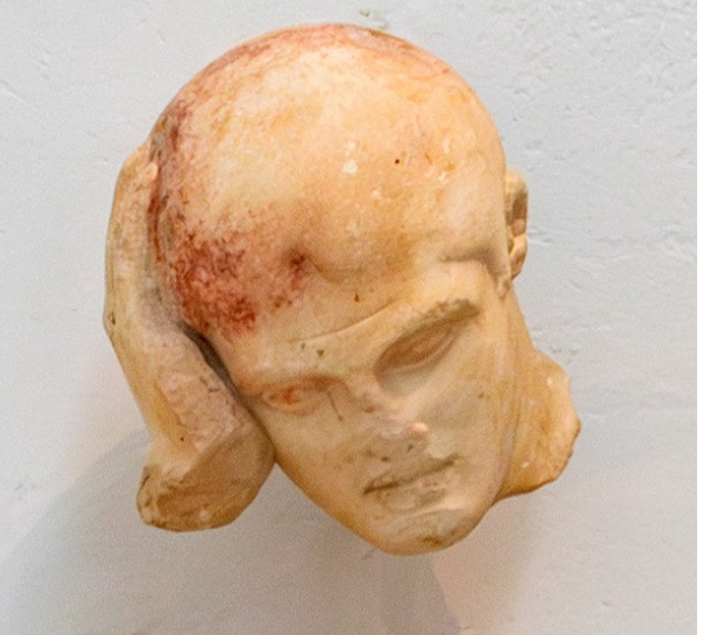
How is detail created in Herakles face? What does the expression suggest? (2 Points)
Clear age differentiation portrays him as younger showing him at the start of his journey
Exhausted facial expression e.g. Hand on the head, pouted lips, heavy eyelids → Contrasts the triumphant nature of his victory.
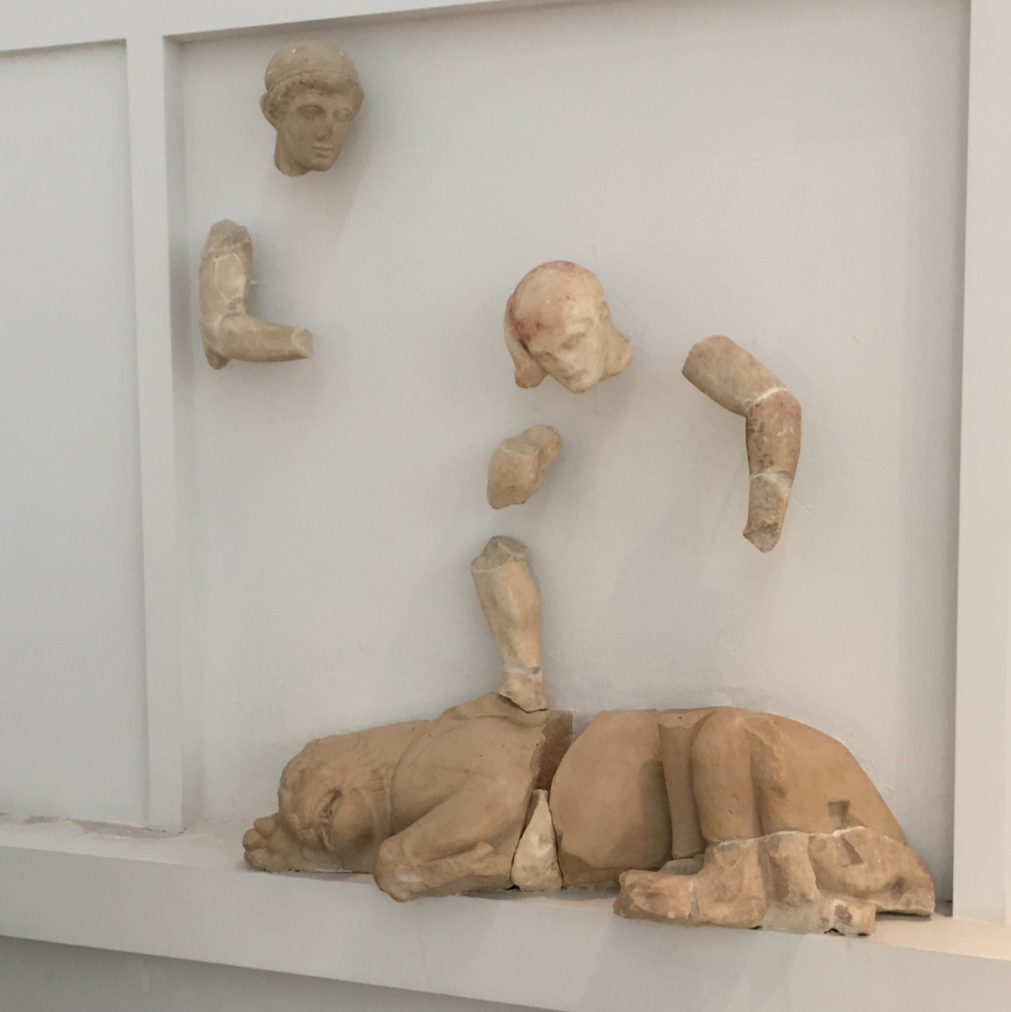
Is this metope prescribed or unprescribed?
UNPRESCRIBED

Scholarly Quote
What does Woodford say about the metope of Herakles and the Nemean Lion?
‘Revolutionary’
‘The Olympia sculptor did something entirely different’ → Referring to Herakles’ facial expression
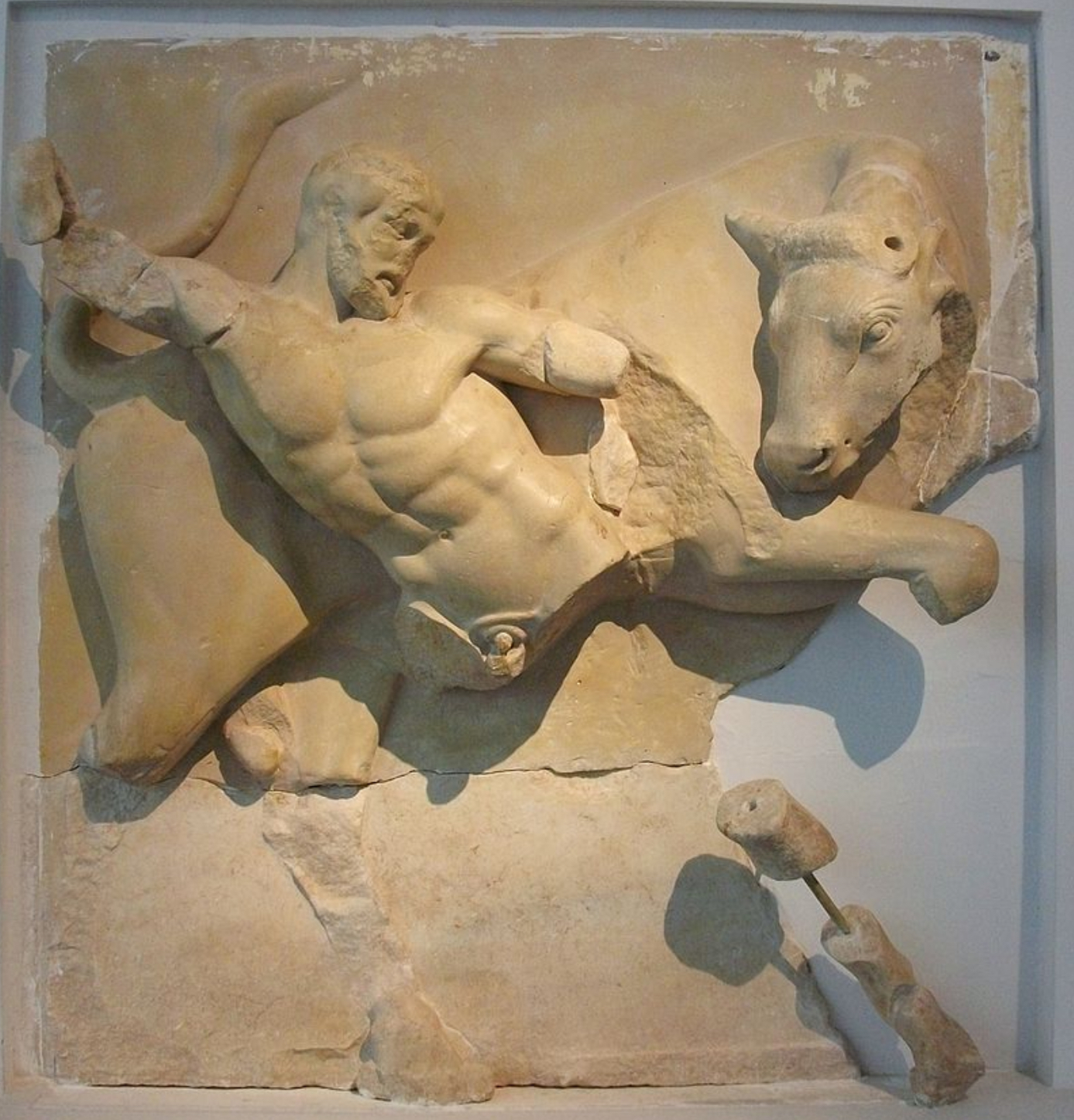
What labour of Herakles does this metope depict?
Herakles fighting the Cretan Bull, his seventh labour.
He was sent to capture the bull by Eurystheus after King Minos refused to sacrifice it to Poseidon who in his rage drove the bull to a frenzy.
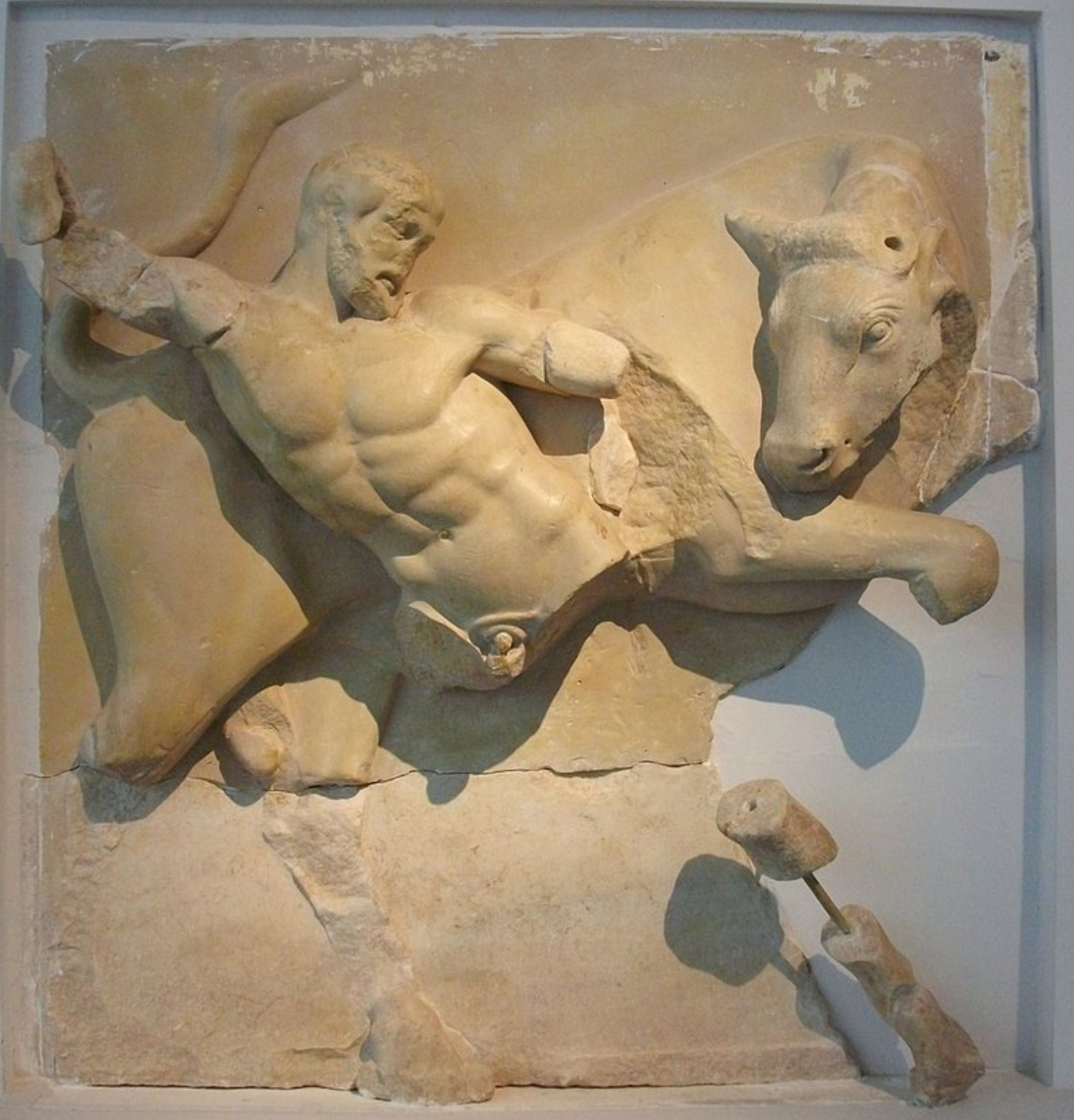
What is this metope made from?
Parian Marble

When is this metope dated to?
460 BC
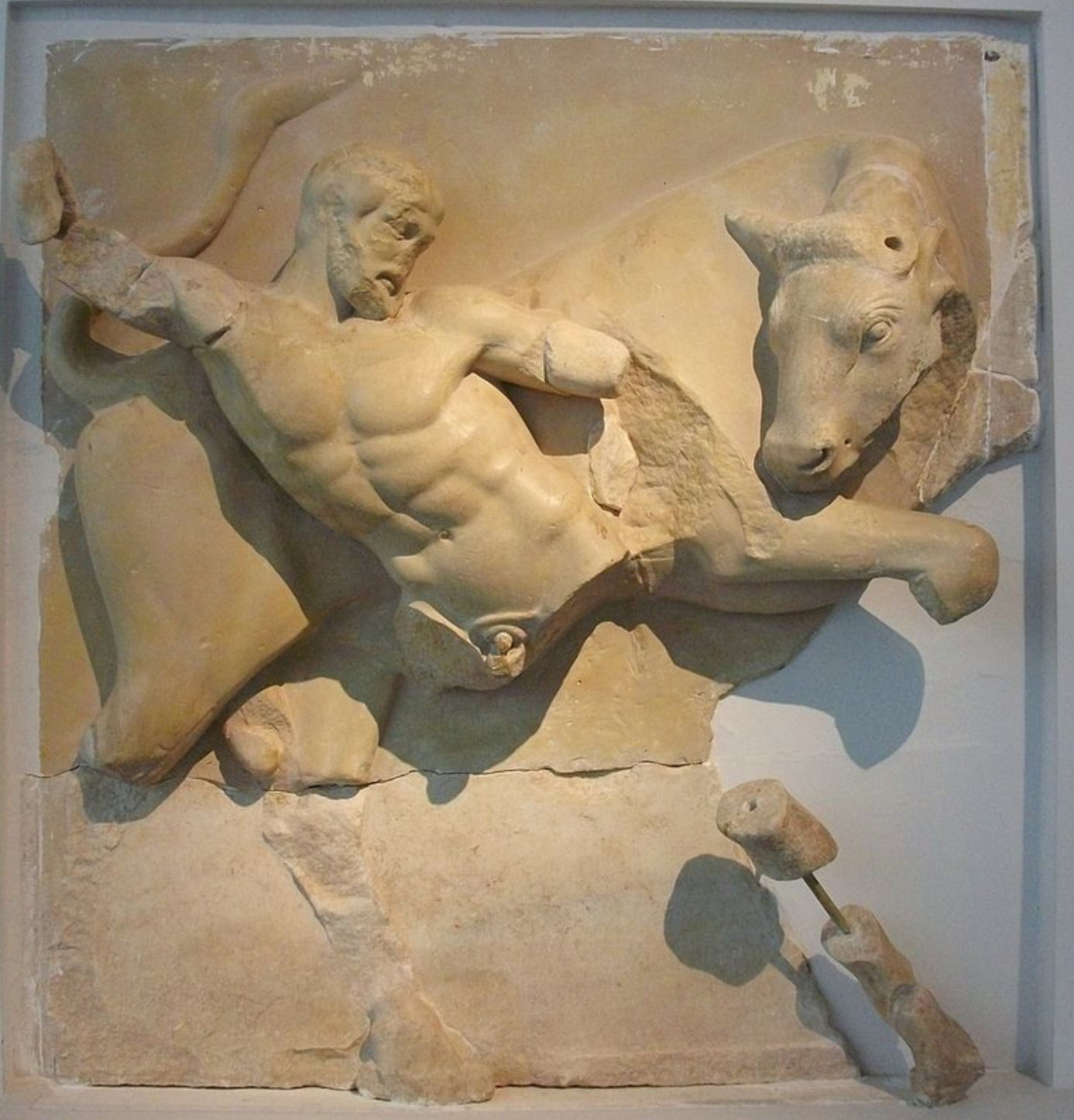
How tall is this metope? And how wide? Give in metres
1.6m high
1.5m wide

How would you describe the composition of this metope? How is the composition of this metope successful?
Chiastic composition with opposing diagonal forces→ Herakles dynamic action pose pulling away from the bull VS the bull mirroring the pose in the opposite direction
Builds tension and creates interest at the centre and edges by allowing the limbs to be stretched within the limits of the shape→ Taking full advantage of the shape
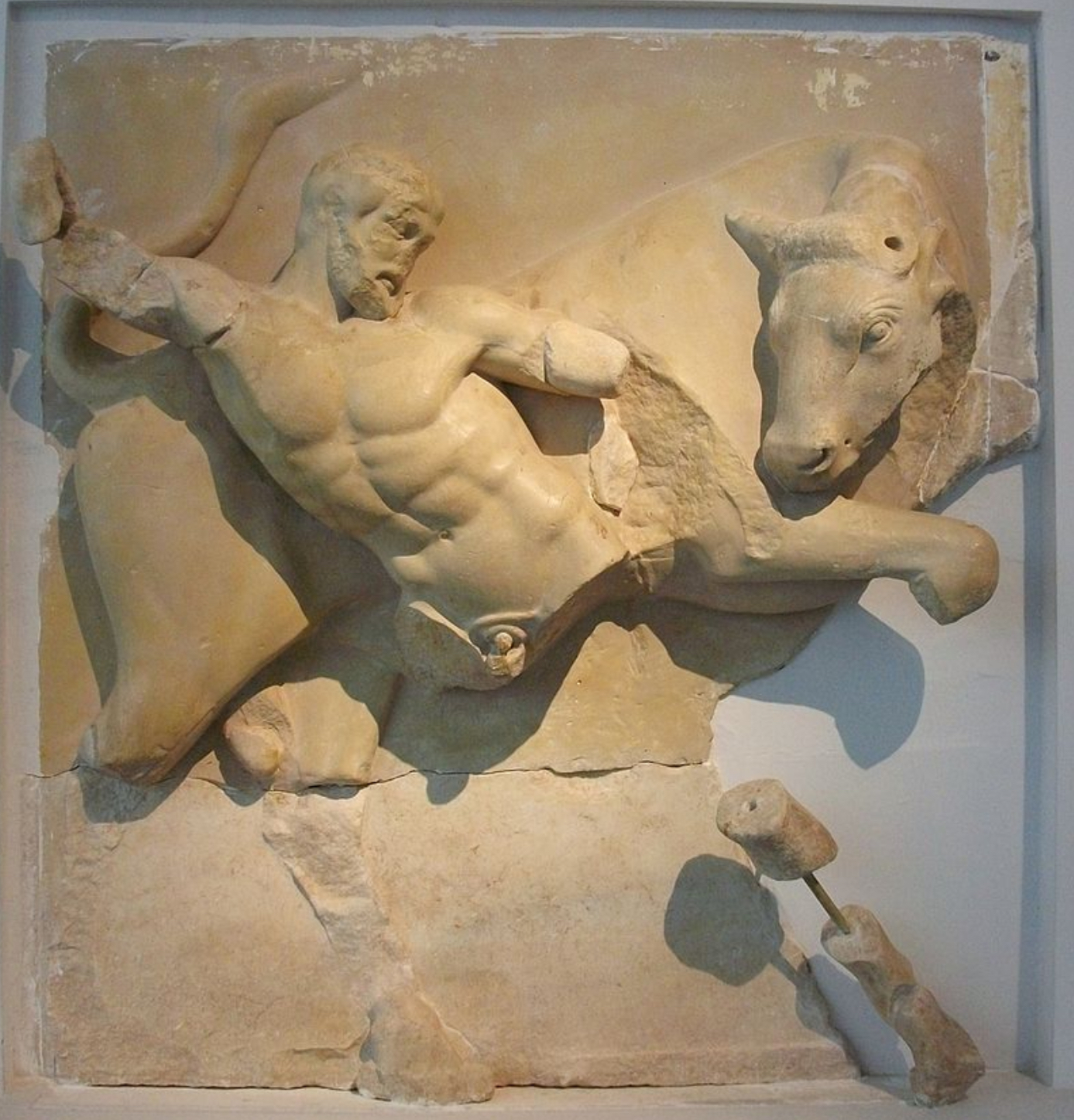
How is the tension within the conflict emphasised by the sculptor?
The bulls head is in the round with a foreshortened neck and pulled towards Herakles in confrontation this ensures that they maintain eye contact creating a focus on the conflict (it also allows the figure to fit in the space showing of the artists techne). Herakles reacts in turn by turning his head to confront the bull.
There inward facing heads draw attention to the central conflict.

What is positive about Herakles’ figure? What is negative about Herakles’ figure?
POSITIVES:
Age differentiation portrays him as older showing the change over time as Herakles completes his labours e.g. facial hair
Severe early classical style features e.g. heavy lidded eyes and large jaw
NEGATIVES:
Muscles in the torso not really reacting to the pose e.g. no tension in his stomach

Scholarly Quote
What does Woodford say about the metope of Herakles and the Cretan Bull?
‘Herakles has pulled the bull’s head round so that man and beast confront each other’

Scholarly Quote
What does Pedley say about the metope of Herakles and the Cretan Bull?
‘Motion in one direction is countered by motion in another in this crossing composition’
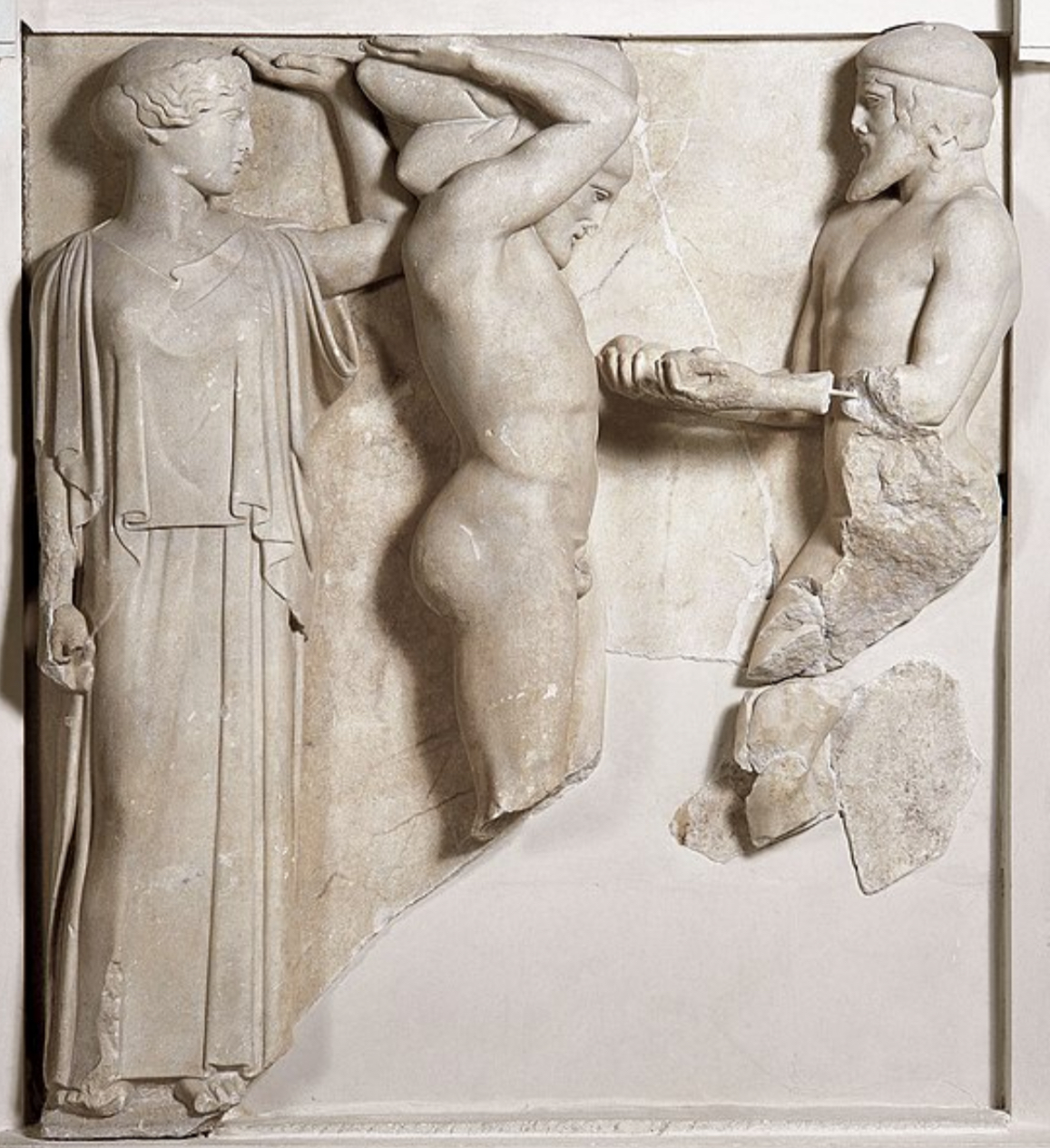
What labour of Herakles does this metope depict?
Herakles and the Garden of the Hesperides.
Herakles purported the heavens on his shoulders while Atlas, who usually had this job, fetched the apples for him.

What material is this metope made from?
Parian Marble
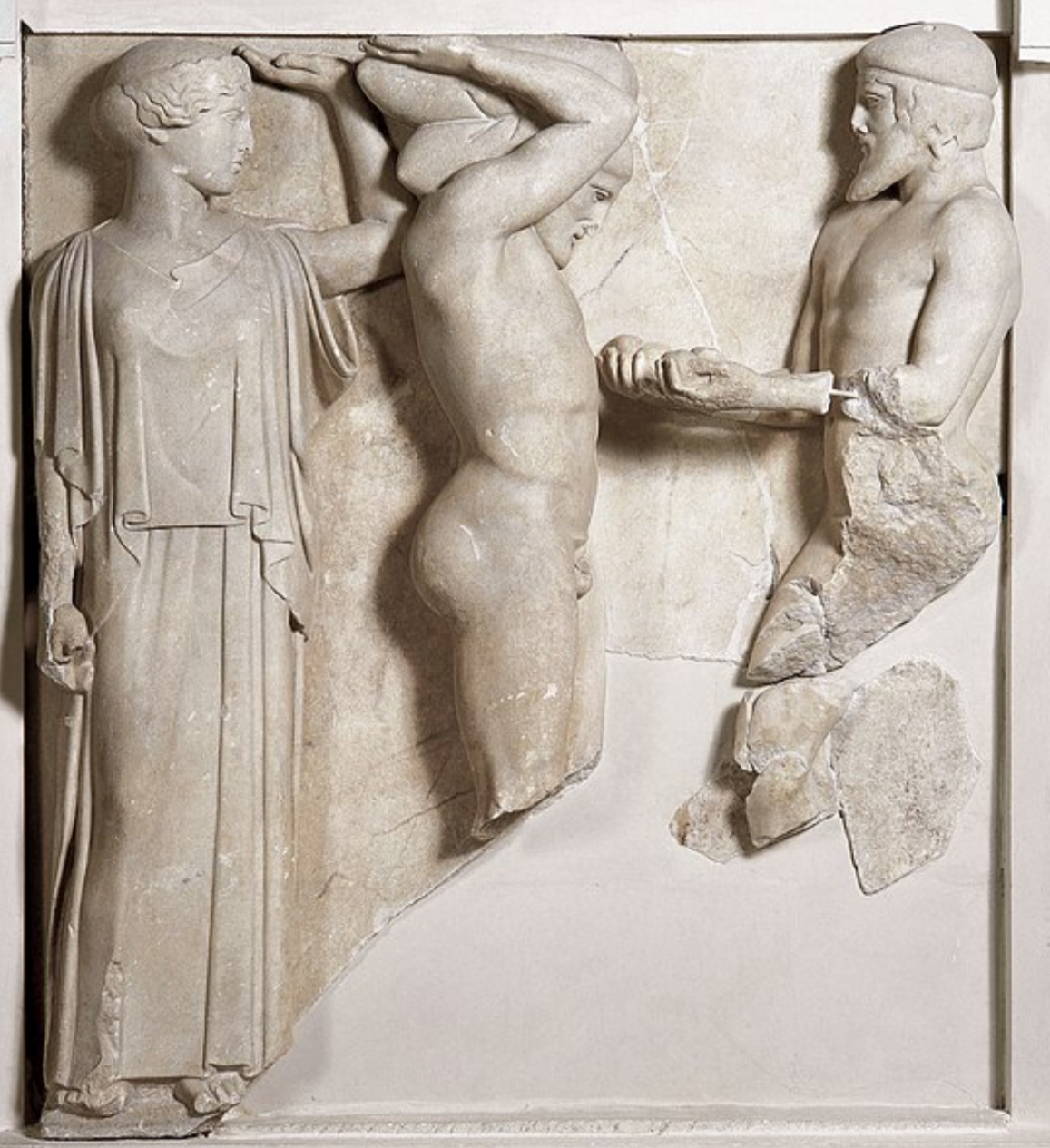
When is this metope dated to?
460BC
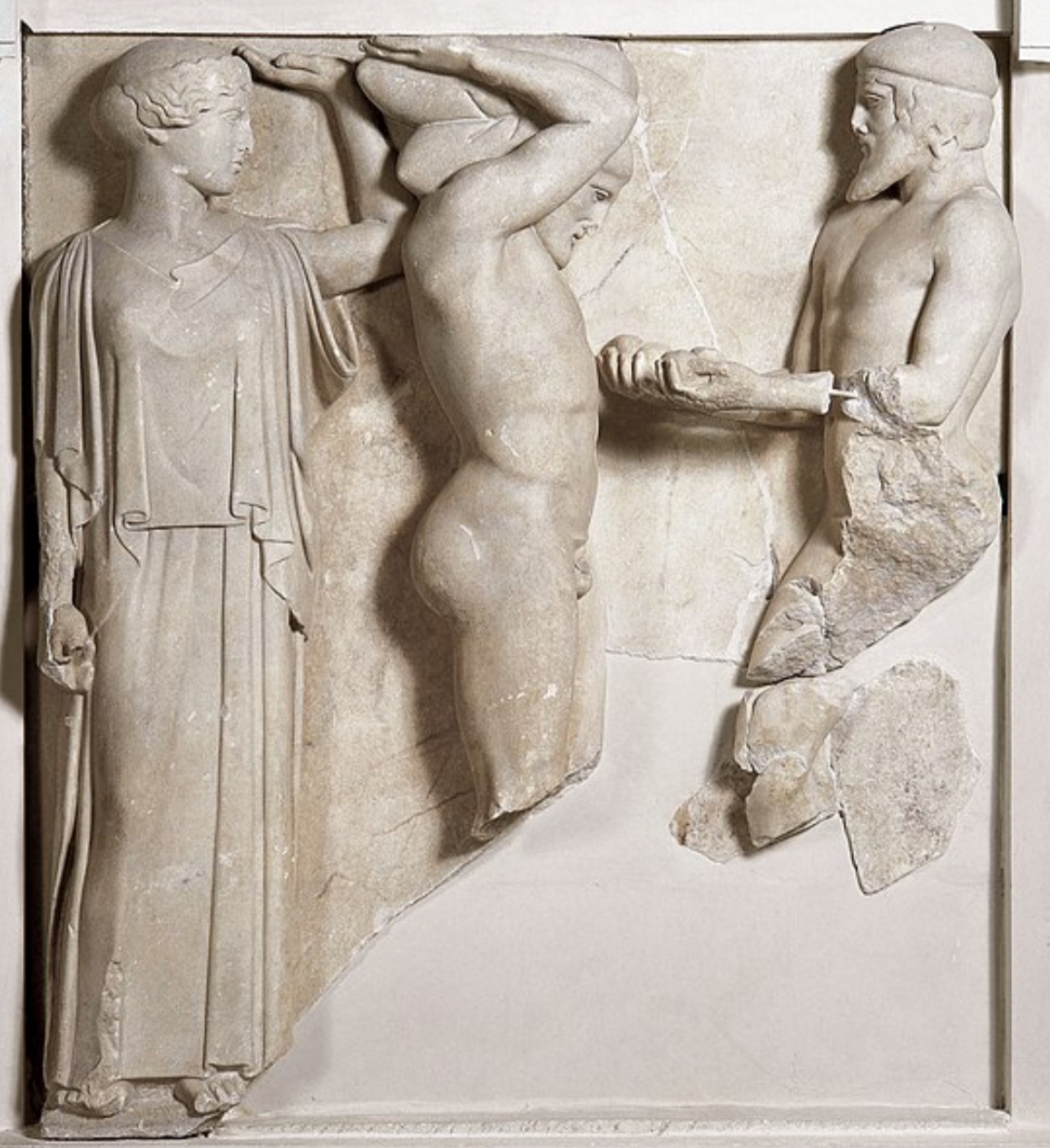
How tall is this metope? And how wide? Give in metres
1.6m high
1.5m wide
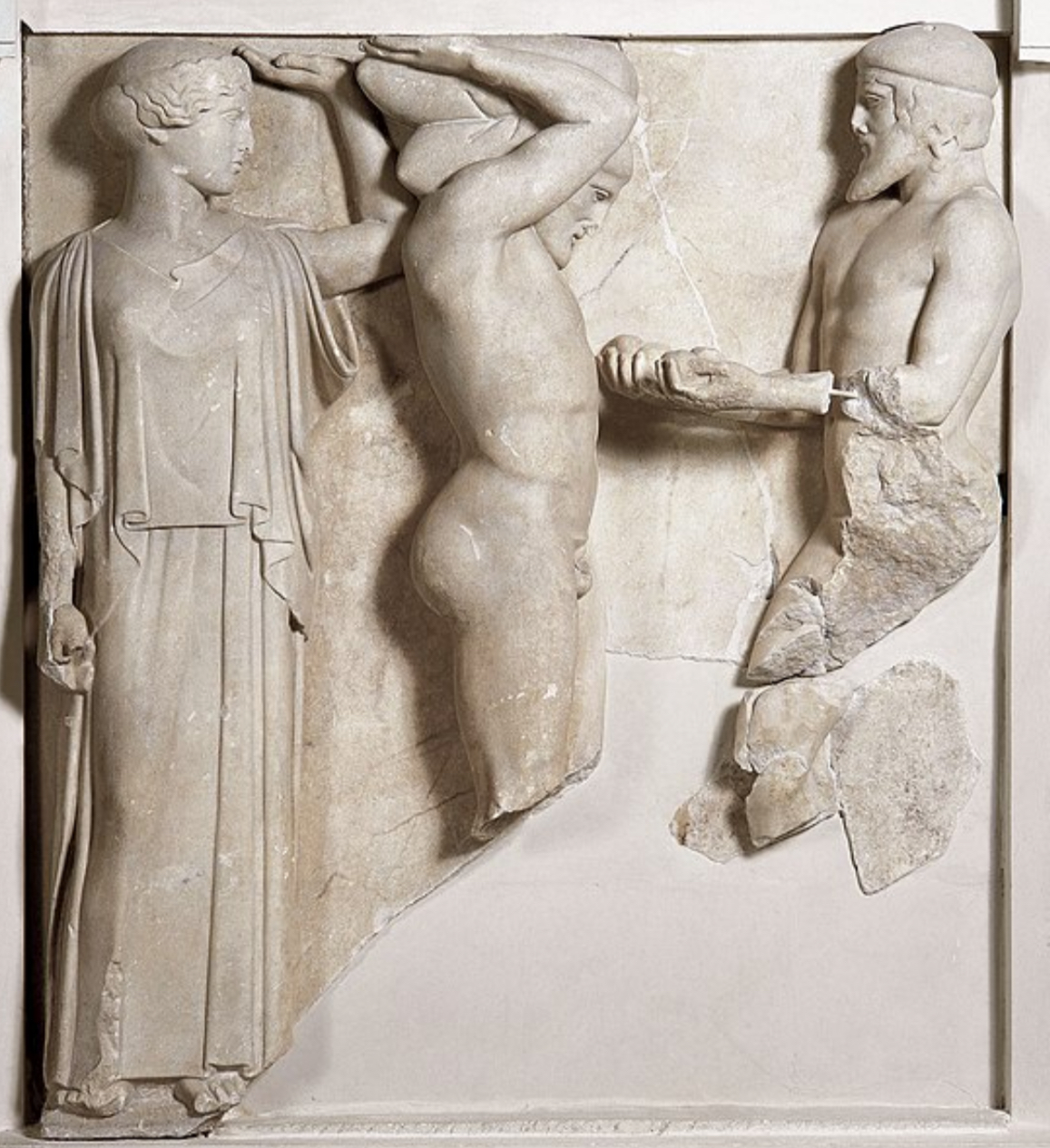
Name the figures in this metope from left to right?
Athene, Herakles and Atlas
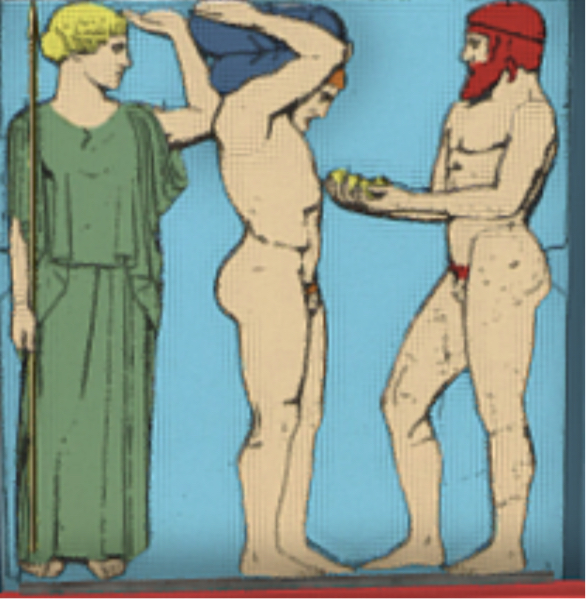
What type of composition is this metope?
A vertical composition with Athene in frontal view, Herakles in profile and Atlas in ¾ view
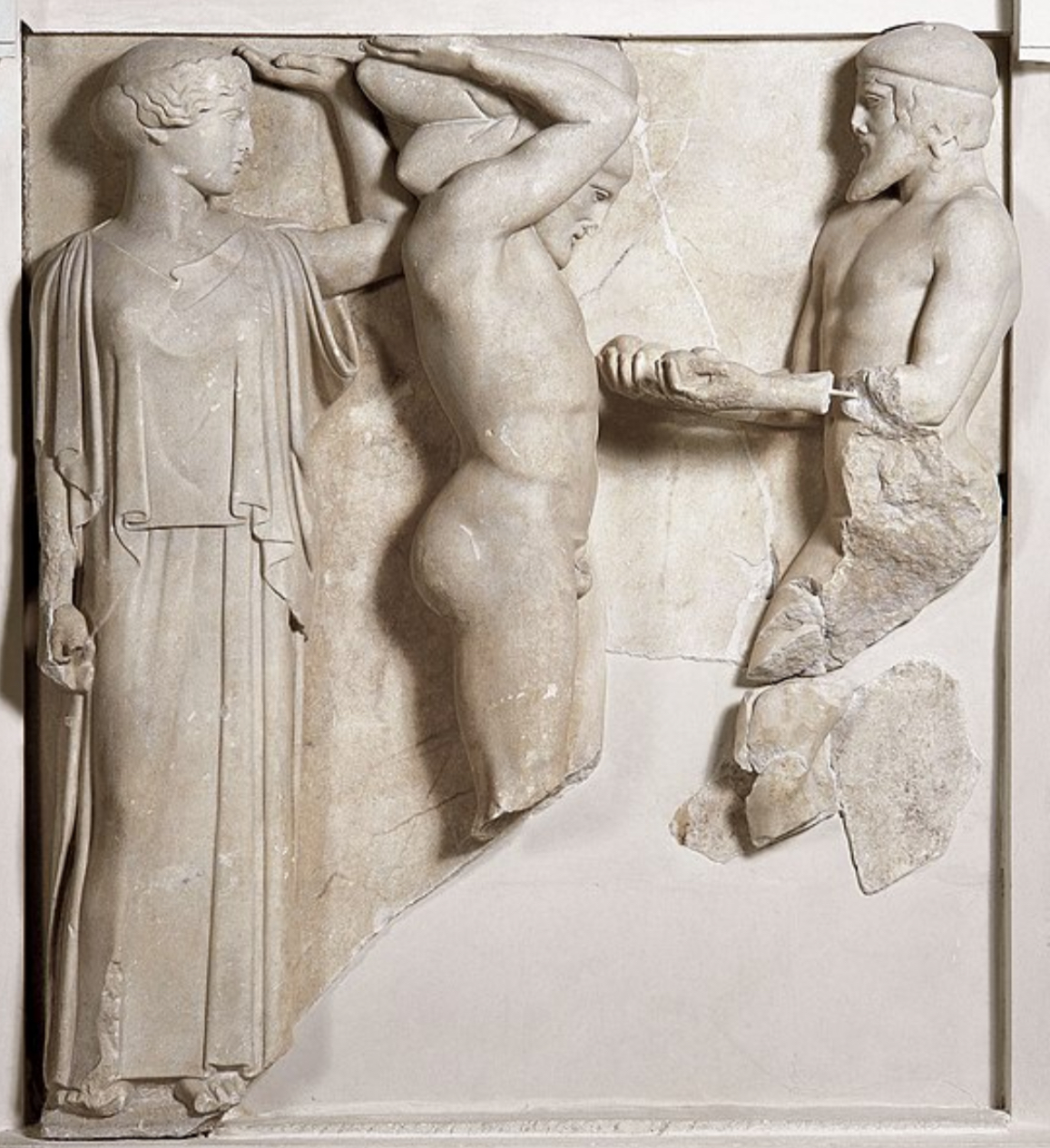
What is successful about this metope? (3 Points)
The metope directly interacts with the frame to make it appear as though Herakles is holding the top of the metope reflective of the sky
The right angle in Athene’s arm VS the acute angle in Herakles’ arm shows the difference in power between the two→ Athene is a god who supports Herakles effortlessly, Herakles is only half divine so he struggles more as seen in his exhausted facial expression and bent head
Herakles is the central focus as both of the other figures face inwards drawing attention to him
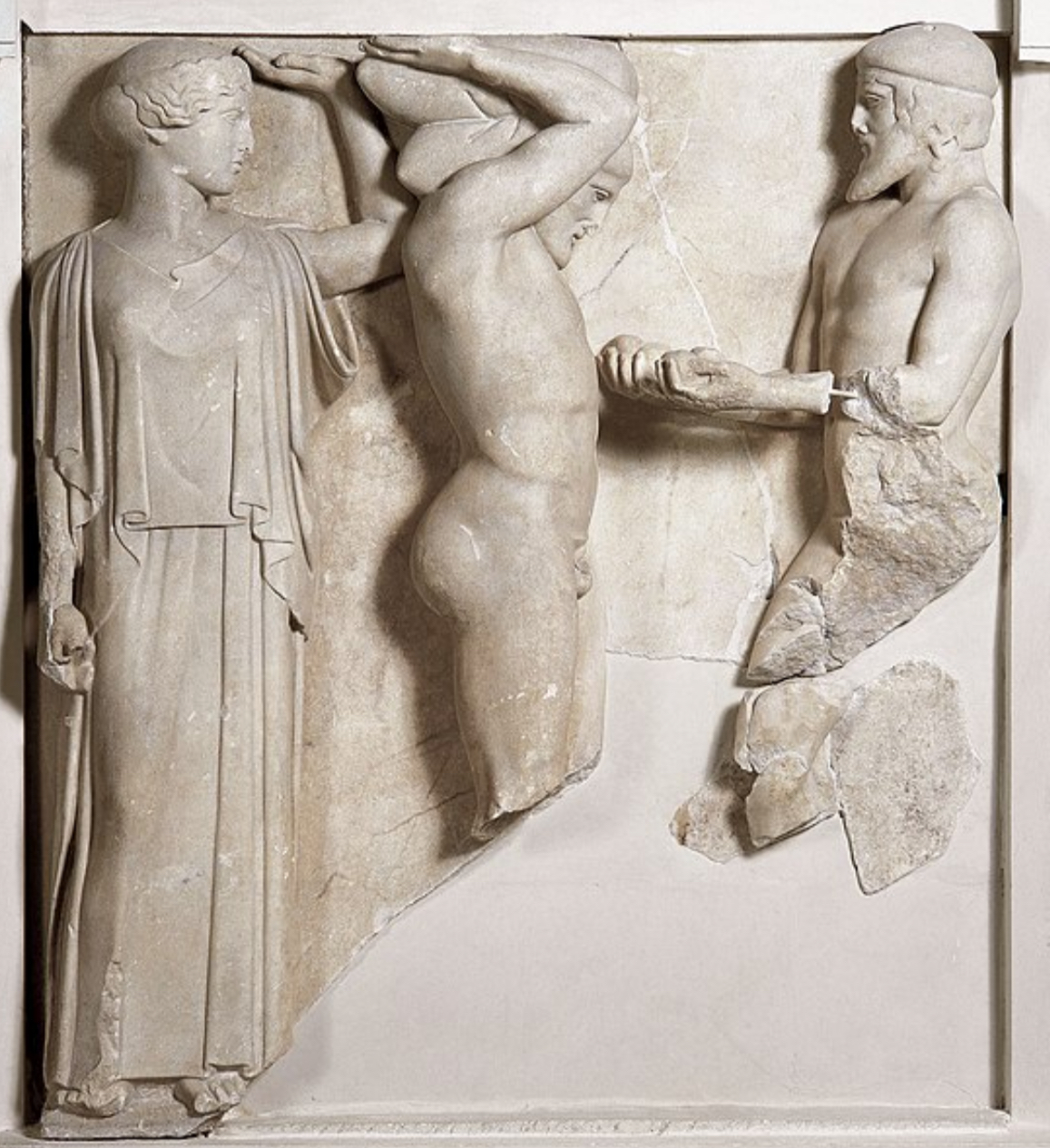
What is unsuccessful about this metope? (2 Points)
Lacks distinctive emotion and movement→ The figures stand rather rigidly with serious expressions on their faces
Athene’s People is heavy with deep folds and fluting disguising the anatomy beneath her and making her appear static

Scholarly Quote:
What does Woodford say about this metope of Herakles and the Garden of the Hesperides?
‘Herakles’ enforced stillness contrasts with Atlas’ freedom of movement’
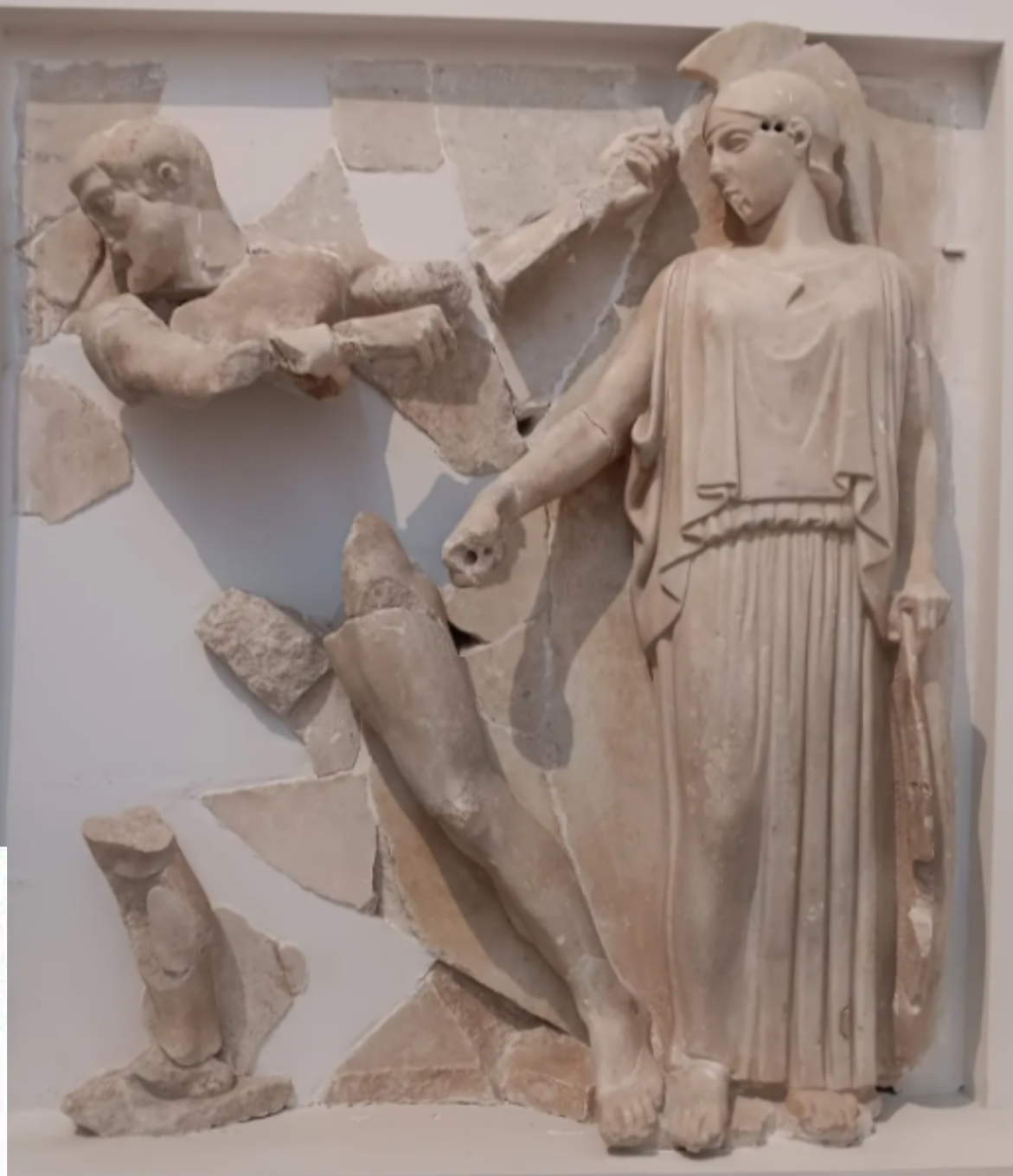
What labour of Herakles is depicted in this metope?
Herakles’ fifth labour where he was made to clean the cattle stables of King Augeas of Elis which had not been cleaned in over 30 years.
Herakles in the end redirected two rivers to flow through the stables and clean away the mess (BUT this is not shown in the metope)
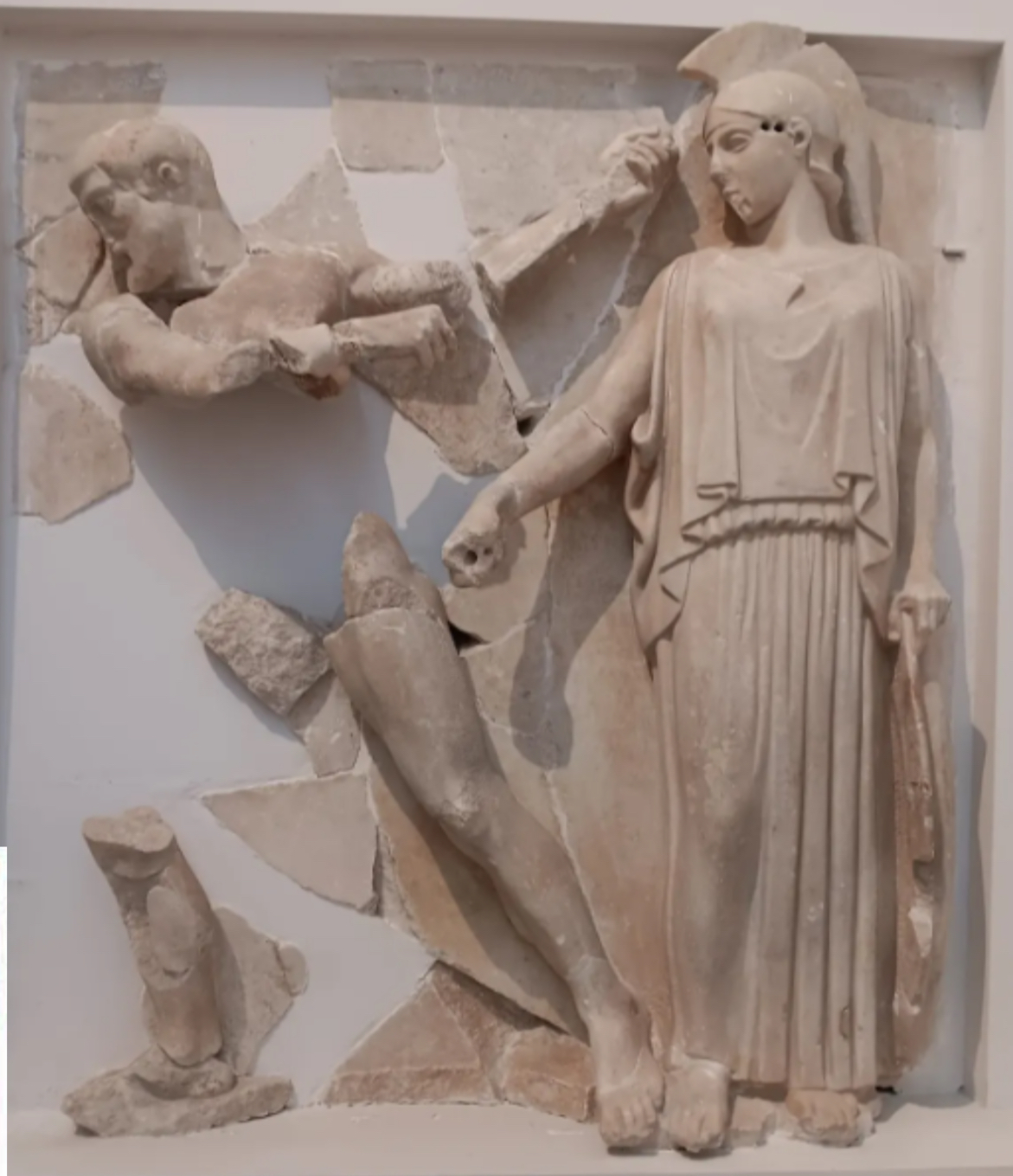
What material is this metope made from?
Parian Marble
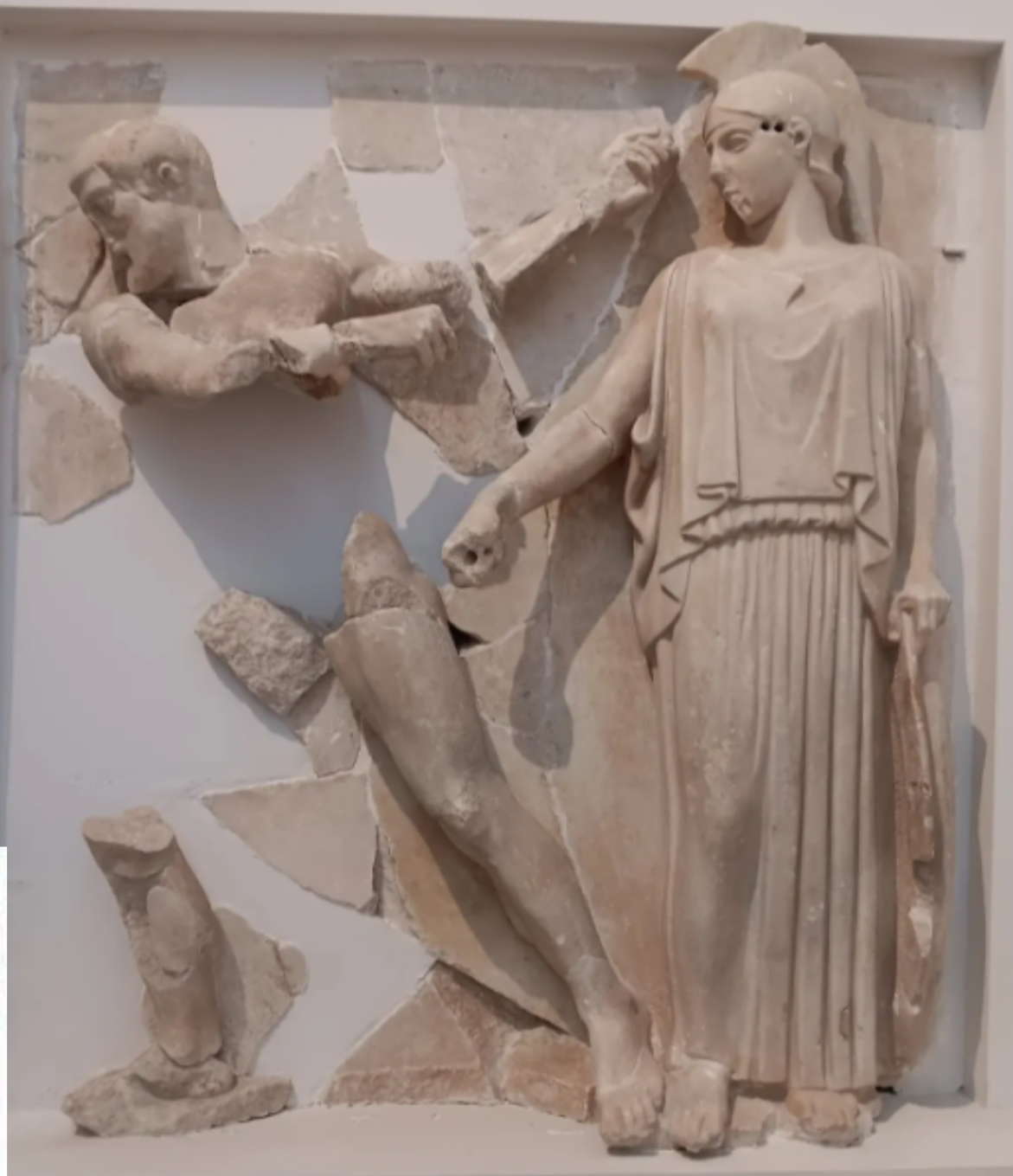
When is this metope dated to?
460 BC
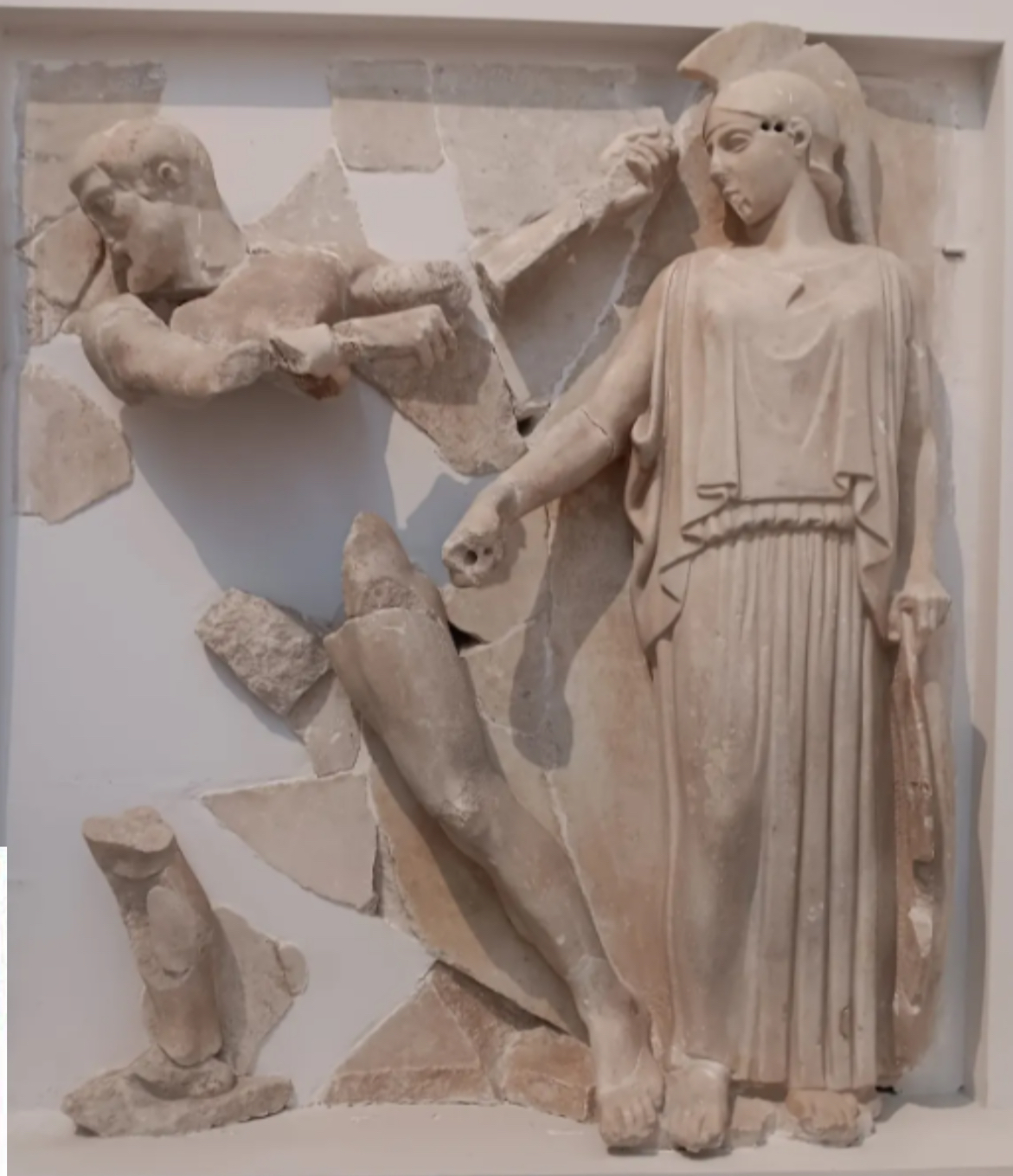
How tall is this metope? And how wide? Give in metres
1.6m high
1.5m wide

How is the composition of this metope displayed?
Athene’s rigid upright vertical stance contrasts Herakles diagonal lunging stance. This displays Athene’s power and guidance and shows Herakles’ hard work and dedication
However Athene mirrors Herakles arm which is parallel to his showing her support.

What is successful about this metope? (3 Points)
Herakles and Athene’s feet are pushed together showing solidarity and support. They are also aligned at the waist
Athene’s drapery is detailed with catenary shapes in the upper torso and deep fluting folds in the lower drapery.
Age differentiation shows Herakles growing confidence e.g. bearded face

Scholarly Quote:
What does Woodford say about the metope of Herakles and the Stables of Augeas?
‘Strong opposing diagonals’
‘Athena holds her arm roughly parallel to Herakles’- a subtle gesture of support’